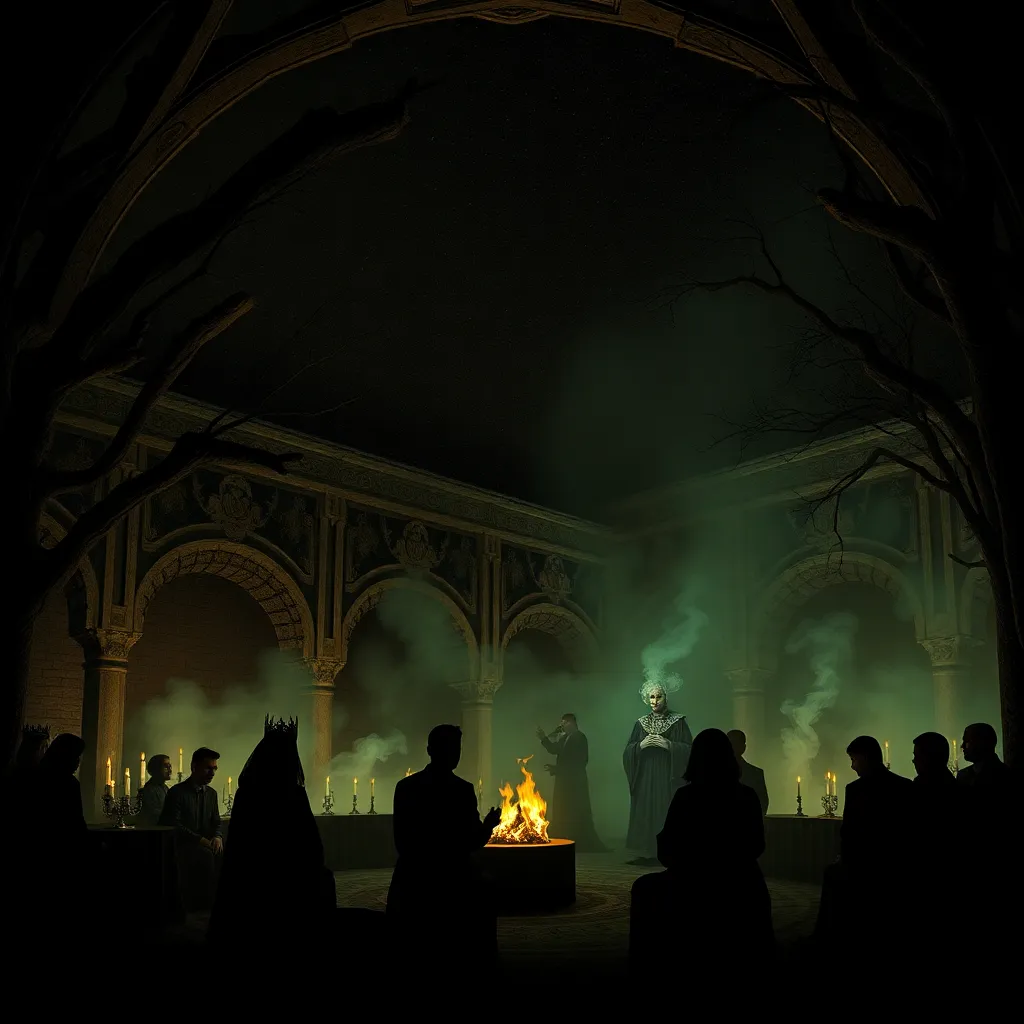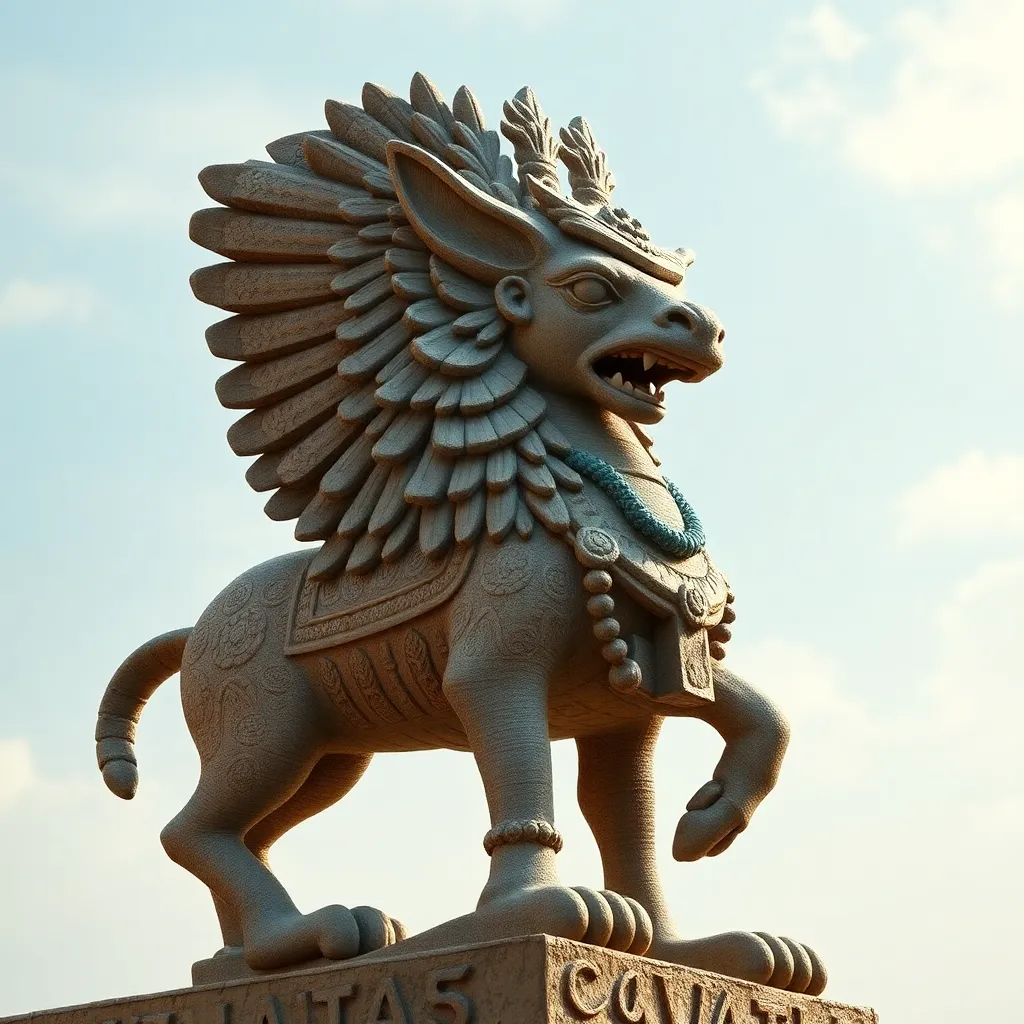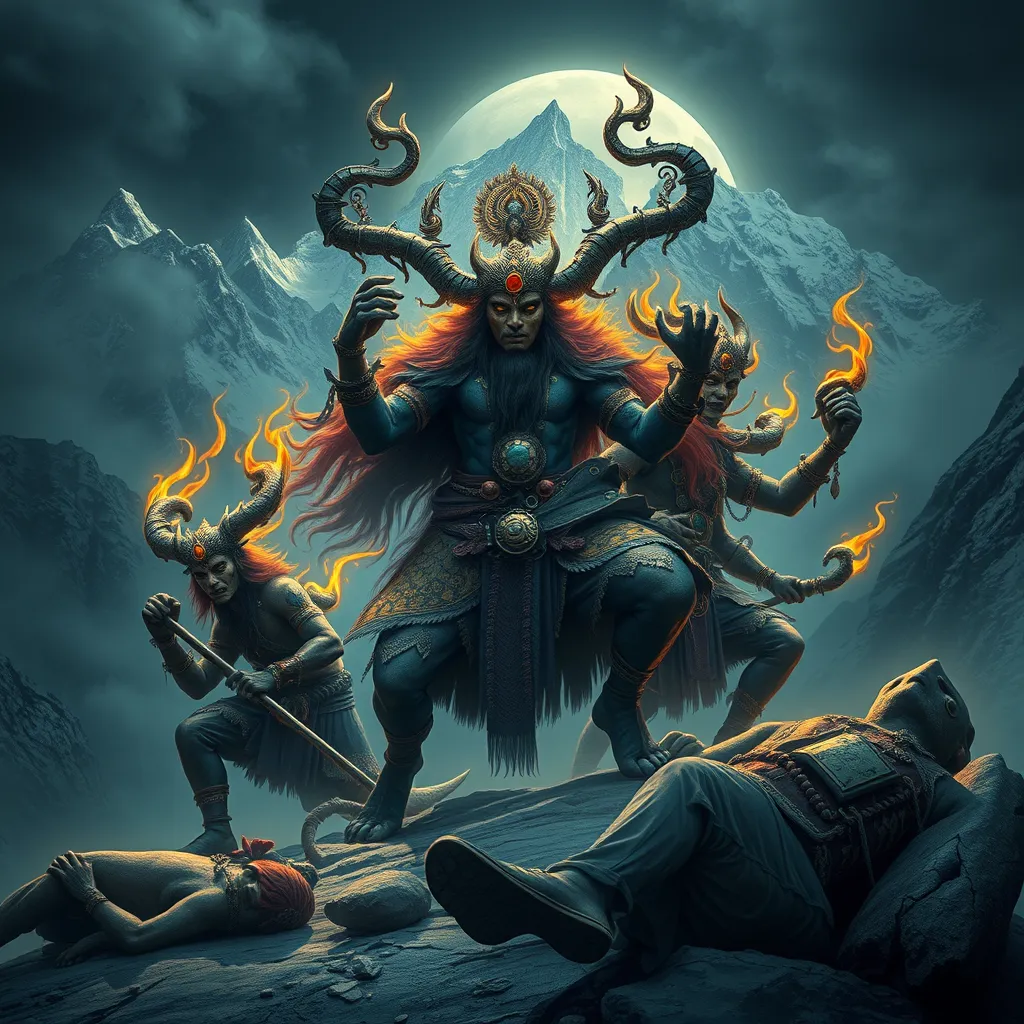The Dybbuk’s Song: Exploring the Music and Rituals Used to Exorcise the Spirit
I. Introduction
The Dybbuk, a concept rooted in Jewish folklore, represents a restless spirit of a deceased person who is believed to possess the living. This haunting figure is emblematic of both sorrow and spiritual unrest, making its exorcism a significant practice in Jewish tradition. The process of exorcism, particularly in the context of the Dybbuk, is steeped in rich rituals and music that serve to invoke healing and restoration.
Music and ritual play a crucial role in these exorcism practices, acting as conduits for spiritual energy and emotional release. This article aims to delve into the historical and cultural significance of the Dybbuk, the role of music in exorcism rituals, notable case studies, and the contemporary implications of these beliefs.
II. Historical Context of the Dybbuk
The origins of the Dybbuk concept can be traced back to Jewish mysticism, particularly within the teachings of Kabbalah. The term “Dybbuk” itself comes from the Hebrew word “dibbuk,” meaning “to cling” or “to attach.” This suggests a spirit that clings to a living person, often due to unresolved issues at the time of death.
Over the centuries, beliefs surrounding possession and the methods of exorcism have evolved significantly. The Dybbuk became a symbol of the human struggle against the unresolved past, particularly within Ashkenazi Jewish communities. Its cultural significance is profound, as it embodies themes of grief, loss, and the societal response to mental health, often intertwining with folklore and storytelling.
III. The Role of Music in Exorcism Rituals
Music is an integral part of Dybbuk exorcism rituals, serving both as a psychological tool and a spiritual medium. Traditional songs associated with these exorcisms can vary widely, but they typically incorporate elements that resonate with the themes of healing and purification.
- Melody: The melodies are often haunting and reflective, designed to evoke deep emotional responses.
- Rhythm: Rhythmic patterns can be both soothing and invigorating, creating a space for participants to connect with the spiritual realm.
- Lyrics: The lyrics of these songs often draw upon biblical texts, prayers, and themes of redemption, facilitating a dialogue between the living and the spirit.
The psychological and spiritual impact of music during these rituals cannot be overstated. Music helps to create an atmosphere conducive to spiritual healing, allowing participants to confront their fears and connect with their cultural heritage. It serves to unify those present, fostering a sense of community in the face of adversity.
IV. Key Rituals for Exorcising the Dybbuk
Traditional exorcism practices for the Dybbuk are rich with symbolism and ritualistic elements. These rituals are often conducted by a Rabbi or a designated spiritual leader, who guides the process with authority and compassion.
Step-by-step description of common rituals:
- Preparation: The afflicted individual and their family prepare by cleansing the space, often using salt and water to symbolize purification.
- Gathering: Family and community members gather to support the afflicted, creating a circle of protection.
- Invocation: The Rabbi invokes divine names and recites prayers to call upon spiritual forces for assistance.
- Music and Chanting: Traditional songs are sung, enhancing the spiritual atmosphere and encouraging the spirit to reveal itself.
- Confrontation: The Rabbi confronts the Dybbuk, urging it to leave the host and find peace.
- Closure: The ritual concludes with prayers of thanksgiving and a communal meal, symbolizing healing and restoration.
V. Case Studies: Notable Dybbuk Exorcisms
Throughout history, there have been several documented cases of Dybbuk exorcisms that provide insight into the rituals and music employed in these encounters.
- The Case of Esther Horgen: In the early 20th century, Esther, a young woman believed to be possessed, underwent a series of exorcisms. The rituals involved traditional folk songs that resonated with her family’s heritage, ultimately leading to her recovery.
- The Dybbuk Box: A more contemporary case involves a cabinet known as the Dybbuk Box, which allegedly contains a trapped Dybbuk. The rituals surrounding this box have included various musical elements aimed at releasing the spirit.
In each case, the music used not only served to enhance the ritual but also reflected the cultural beliefs and emotional states of those involved, reinforcing the community’s connection to their spiritual practices.
VI. The Dybbuk in Contemporary Culture
The Dybbuk has found its way into modern literature, film, and art, often serving as a metaphor for unresolved trauma and the psyche’s struggles. Works such as the play “The Dybbuk” by S. Ansky have been pivotal in shaping the contemporary understanding of this spirit.
Modern interpretations of the Dybbuk and exorcism rituals often incorporate updated musical styles, blending traditional melodies with contemporary genres. This fusion highlights the ongoing relevance of these cultural practices and their adaptability in the face of modernity.
VII. The Psychological Perspective on Possession and Exorcism
From a psychological standpoint, the concept of possession can be explored through various modern theories. Many contemporary psychologists view possession as a manifestation of psychological distress, often rooted in trauma or unresolved grief.
Music plays a therapeutic role in these exorcism rituals, functioning as a tool for expression and release. It allows individuals to confront their fears and emotional turmoil in a supportive environment, potentially leading to healing and empowerment.
Cultural beliefs significantly impact perceptions of mental health, particularly within Jewish communities where the Dybbuk represents both spiritual and psychological struggles. The integration of music in these rituals emphasizes the connection between culture, spirituality, and mental well-being.
VIII. Conclusion
In summary, the significance of music and rituals in Dybbuk exorcisms is profound, highlighting the intersection of spirituality and healing. These practices not only provide a means of confronting the past but also serve to unite communities in shared experiences of grief and restoration.
The enduring legacy of the Dybbuk in Jewish culture is a testament to the resilience of traditions that address the complexities of the human experience. Ultimately, the relationship between music, spirituality, and healing remains a vital aspect of understanding the Dybbuk and its place in both historical and contemporary contexts.



